Did you know that 75% of your potential customers don’t go beyond the first page of search results?
And that almost the exact same number turns to the search engine for vendor recommendations?
In other words, if you want to grow your MSP and attract potential customers to your site, your content must rank on the first page of Google.
But if you’re wondering “just how am I going to optimize my MSP website for that,” you’re in luck.
In this post, I’ll show you exactly how to optimize your website’s content to immediately boost its rankings.
[thrive_leads id=’1833′]
Why Optimize Content?
You may be surprised why I specifically talk about content, rather than your website.
So let me explain:
Search engines use various factors to rank a site in their results. In fact, according to a number of reports, there are over 200 ranking factors.
However, they all relate to different aspects of your site.
Some analyze how you’ve built the site, and how easy it is for users to navigate.
Others take your technical setup into consideration.
Many factors focus on links and domain authority.
But the large majority center around the content on the pages of your site. Marketers commonly refer to these factors as on-page SEO.
And here’s the most important part:
On-page optimization lays the foundation for better rankings.
The better content you publish, and the more you optimize it to rank for specific keywords, the greater results you can expect.
So, let’s take a look at how to optimize your content and boost it in the search results.
#1. Include the Main Keyword at the Start of the Title Tag
Page title, the little blurb about a page that appears in the browser’s tab, is in fact, the very first thing search engines consider when they are looking for relevant results.
In fact, Brian Dean – one of the most renowned SEOs out there notes:
“The title tag is a webpage’s second most important piece of content (besides the content of the page) and therefore sends a strong on-page SEO signal.”
Optimizing a title tag is as simple as including a keyword in it.
But, when you do that, you want to make sure that you place the keyword as close to the start of the title tag as possible and have it sound as natural as possible. You see search engines put more weight to the words closest to the start of a page, title tag or any other on page SEO component.
Search engines will display the Title tag as the anchor link (the clickable part of the search result) so it must be interesting and click-worthy.
And since we typically pay attention to the first 3 words of the title, including a keyword there will immediately make it relevant to the searcher.
Here’s an example of title tags showing in Google’s search results.
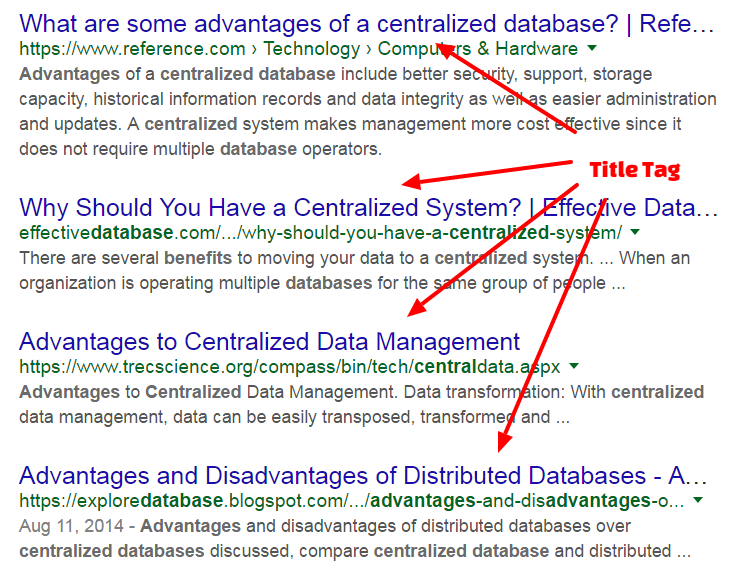
Note that 3 out of these 4 results are showing incomplete titles with ellipsis in the end.
Google search results will show just 512 pixels. So, try to keep it short and to-the-point.
Finally, the Title Tag is also typically used as the heading when someone shares your post or page on social media, so, again, optimizing it for relevancy would help attract social audiences looking for information on this specific topic as well.
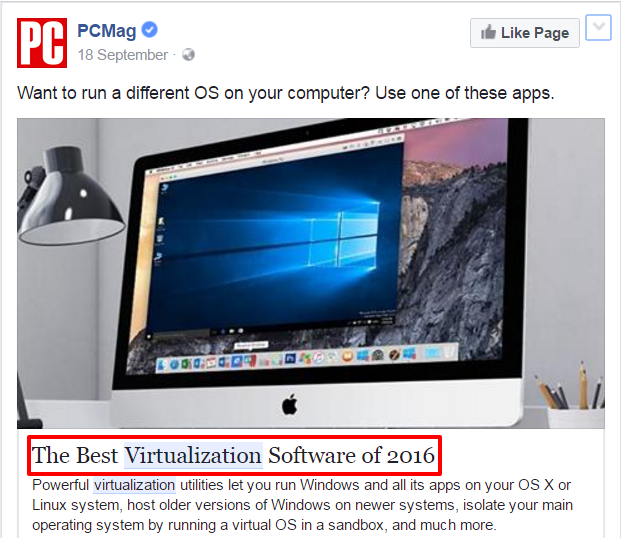
#2. Write a Click-Worthy Meta Description
The Meta Description tag does not affect rankings.
However, it is important for another reason.
You see:
Search engines display the ‘Meta Description’ in search results with keywords related to the searchers query in bold.
Just take a look:
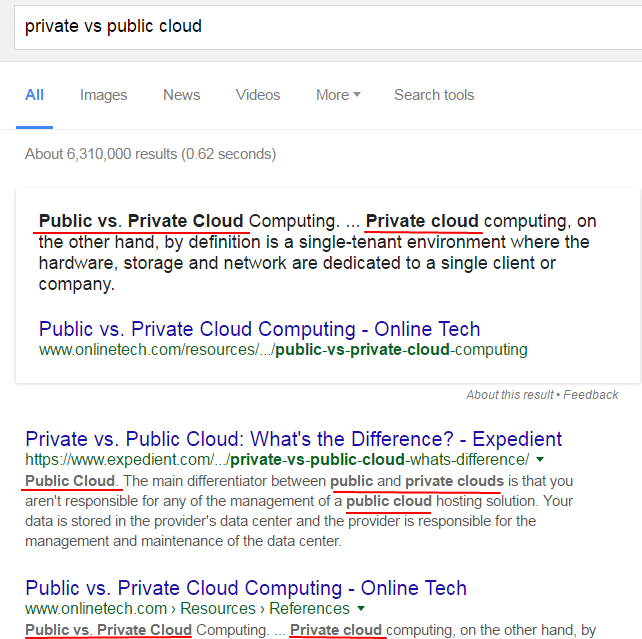
This makes your search listing more relevant to a person looking for that information.
So, as a good practice, include your keyword in the Description tag as well. And if possible, also give a reason why someone should click on your page.
Note: if you don’t specify the Meta Description, then search engines will pick and use a snippet from your content.
But please don’t leave it to search engines, no one knows your what your target audience will find important better than you and your team!
#3. Include the Proper Heading Tags Hierarchy
Heading Tags range from H1 to H6, with H1 being the most important.
In fact, many SEOs refer to the H1 tag as the “second title tag,” to highlight the crucial role it plays in helping your pages to rank.
So, as the first step, wrap your page’s title in the <h1> HTML tag. If you’re using a professional WordPress or HTML theme, then most likely, it’s already optimized this way.
If you’ve coded the page yourself, then make sure that the page title is set in the <h1> tag.
As for the rest of the headings, you don’t need to use all of them in your content.
But whichever ones you use, maintain their hierarchy. Don’t go from H2 to H4 or H5 because a poor structure can weaken your onsite optimization. Wrap your page’s subsections in the <h2> tag. Then, wrap any subheadings within those sections in <h3> tag, and so on.
Also remember that unlike other headings, you can use the H1 tag only once.
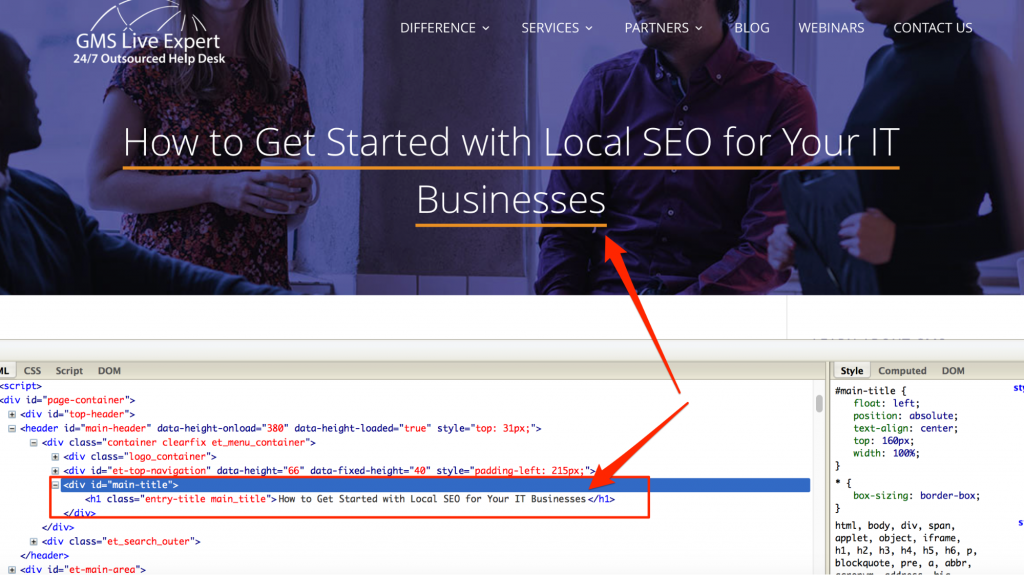
(This is how we use H1 tag to denote our content’s title)
#4. Include the Keyword in the First 100 Words of the Copy
You already know to use the target keywords in title tag, the meta-description, and in the H1 heading.
But there are some other places you should include it too.
For example, your main keyword should appear in the first paragraph or the first 100 words of content. Doing so will send a strong signal to Google as to which phrases this page is relevant to.
Also, you shouldn’t optimize a page for more than one keyword. So, try to target just one keyword or phrase per page.
For example, do not create a “services” page and mention all services together. Create separate pages for different services like managed hosting, virtualization, or network security.
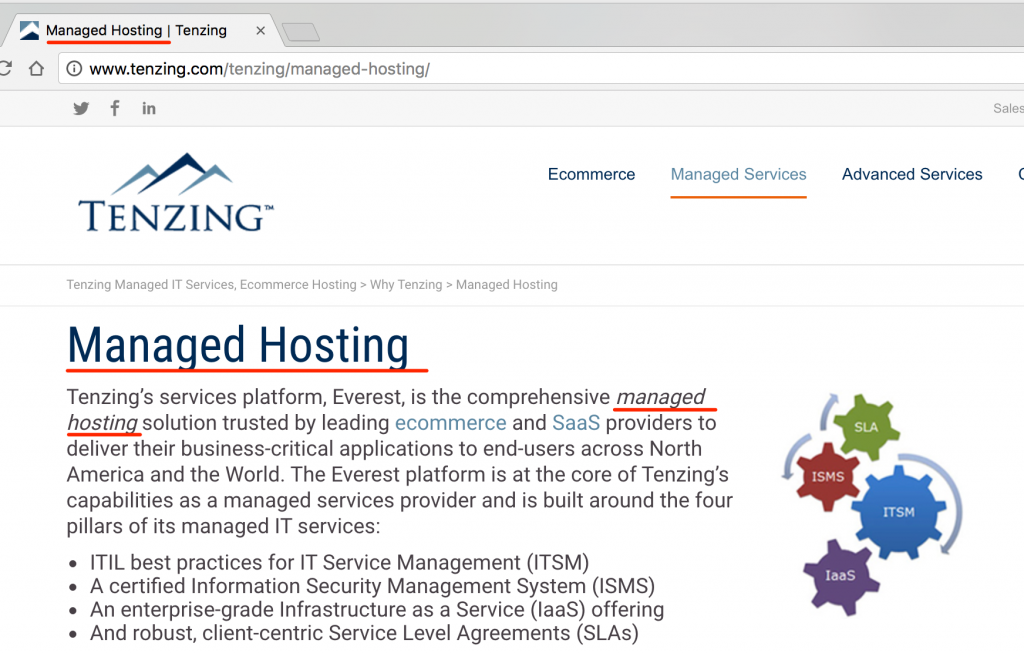
(Example of a service page utilizing the keyword in all of the crucial elements)
#5. Target LSI Keywords Too
You know:
Optimizing a page for specific keywords does not mean using the exact same word or phrase everywhere.
(In fact, that’s keyword stuffing, and it can lead to a Google penalty.)
However, you should target your keywords synonyms or close variants of your targeted term.
For example, you could include terms like “virtual cloud environment” or “virtual storage” while writing about “virtualisation.”
We refer to these keywords as LSI phrases – keywords that are semantically related to your main keyword.
LSI keywords expand the list of potential phrases your page could rank for, and target different ways your target customers might be looking for the services you offer.
How to Find LSI Keywords for Your Content:
Use tools like Adwords Keyword Tool or LSIgraph.com to find LSI phrases you could use.
Type the main keyword and it will give you a list of relevant keywords to use in your content. For example, here’s a list of keywords related to “cloud computing.”

#6. Use the Right Content’s Length
Look:
Long pages tend to rank and convert better than short content.

Coincidentally, they also get more likes and shares on social media.
And although it is difficult to define the perfect length or the minimum word count you should target, you can follow some guidelines:
- When writing a blog post, aim for at least 1000 words or more.
- If you are creating a page e.g. services pages or about us, make it at least 500 words long.
#7. Link to Relevant Resources
I admit:
Linking out is difficult.
After all, you want your readers to stay on your site, not go somewhere else, right?
But here’s the catch:
Including a link to relevant information that could help a person learn even more on the topic sends a very strong relevancy to Google.
As Brian Dean points it:
“Citing references and sources may be a sign of quality. The Google Quality Guidelines states that reviewers should keep an eye out for sources when looking at certain pages: “This is a topic where expertise and/or authoritative sources are important…”
Plus, links to sources relevant to your page help Google to better understand what your page is about, and its topic. This, in turn, helps it to identify for what search phrases it should appear in search results.
TIP: If you’re worried about sending visitors away from your site, use this simple trick. Set your outbound links to open in a new browser tab. This way, you’ll allow a person to get more information on the topic, while still keeping your page open on the screen.
[thrive_leads id=’1833′]
Sign up below to receive our monthly IT Services advice + other cool stuff straight to your inbox.